The automotive landscape is evolving rapidly, with consumer preferences shifting towards SUVs that embody both luxury and practicality. In this comprehensive comparison, we take a closer look at two remarkable contenders: the Mazda CX-80 and the Volvo XC60. Both vehicles offer unique features, state-of-the-art technologies, and impressive performance metrics, making them prime examples of modern automotive engineering.
Mazda CX-80 vs Volvo XC60 – Performance, range & efficiency compared
Everyday use, family trips or long-distance drives – here’s where the differences show.
Discover whether Mazda CX-80 or Volvo XC60 fits your lifestyle better.
Design and Dimensions
The Mazda CX-80 is a larger SUV, measuring 4995 mm in length and 1890 mm in width, which translates to a more spacious interior, capable of accommodating up to seven passengers. Its bold and elegant design language reflects Mazda's Kodo design philosophy, making it a head-turner on the road.
On the other hand, the Volvo XC60 presents a more compact profile, with a length of 4688 mm and a width of 1902 mm, ideal for urban environments while still exuding an air of sophistication. Though it seats five, the XC60’s premium materials and minimalist Scandinavian design make it a luxury unto itself.
Engine Options and Performance
Both vehicles come equipped with advanced powertrains that promise exceptional performance and efficiency. The Mazda CX-80 offers two engine options, including a robust 327 HP Plug-in Hybrid and a 254 HP Diesel MHEV, allowing for a maximum torque of 550 Nm. The CX-80 has an impressive 0-100 km/h acceleration time of 6.8 seconds combined with an electric range of 60 km, making it both powerful and economical.
In comparison, the Volvo XC60 presents a wider power range with options peaking at 455 HP. The standout performance is from its higher-end Plug-in Hybrid version that achieves 0-100 km/h in just 4.9 seconds. With a maximum torque of 709 Nm and an electric range of 80 km, the XC60 provides a thrilling driving experience while maintaining efficiency.
Fuel Efficiency and Emissions
Fuel efficiency is paramount in today’s automotive market, and both models offer commendable figures. The Mazda CX-80 consumes an impressive 1.6 L/100 km in its hybrid variant while the Diesel MHEV variant shows a consumption of 5.7 L/100 km. In terms of CO2 emissions, the CX-80 performs admirably with a class B rating, releasing just 35 g/km in the hybrid variant.
In contrast, the Volvo XC60, while not matching the CX-80’s electric efficiency, manages a respectable fuel consumption of 7.7 L/100 km in its gasoline variant, with CO2 emissions varying per model but reaching as low as 22 g/km for the hybrid variant. This puts the XC60 in a favorable light for eco-conscious consumers.
Interior and Technology Features
Inside, the Mazda CX-80 boasts a spacious cabin with cutting-edge technology. It offers a host of driver-assistance features such as adaptive cruise control, lane-keeping assist, and advanced infotainment systems that enhance the driving experience. The option of seven seats makes it a practical choice for families.
Meanwhile, the Volvo XC60 emphasizes luxury and comfort, featuring premium materials and an intuitive infotainment system that is the hallmark of the Scandinavian brand. With a comfortable layout and seating for five, it focuses on creating a serene driving environment, supplemented by advanced safety features like Pilot Assist and a robust suite of the latest driver support technologies.
Conclusion: Which SUV Reigns Supreme?
Ultimately, the choice between the Mazda CX-80 and the Volvo XC60 boils down to personal preferences and lifestyle needs. The CX-80 stands out with its larger size and hybrid efficiency, making it a favorite for families seeking comfort and space. In contrast, the XC60 makes a strong case with its exhilarating performance and luxurious touches, perfect for those looking to combine practicality with a premium experience.
Both vehicles showcase the remarkable advancements in the SUV segment and highlight the unique strengths of their respective brands. Whichever choice you make, you’ll be driving away in a vehicle that reflects the future of driving excellence.
Here’s where it gets real: The technical differences in detail
Costs and Efficiency:
Price and efficiency are key factors when choosing a car – and this is often where the real differences emerge.
Mazda CX-80 has a minimal advantage in terms of price – it starts at 48200 £, while the Volvo XC60 costs 49200 £. That’s a price difference of around 977 £.
Fuel consumption also shows a difference: Mazda CX-80 manages with 1.60 L and is therefore significantly more efficient than the Volvo XC60 with 2.80 L. The difference is about 1.20 L per 100 km.
As for range, the Volvo XC60 performs distinct better – achieving up to 82 km, about 21 km more than the Mazda CX-80.
Engine and Performance:
Power, torque and acceleration are the classic benchmarks for car enthusiasts – and here, some clear differences start to show.
When it comes to engine power, the Volvo XC60 has a evident edge – offering 455 HP compared to 327 HP. That’s roughly 128 HP more horsepower.
In acceleration from 0 to 100 km/h, the Volvo XC60 is noticeable quicker – completing the sprint in 4.90 s, while the Mazda CX-80 takes 6.80 s. That’s about 1.90 s faster.
In terms of top speed, the Mazda CX-80 performs slightly better – reaching 219 km/h, while the Volvo XC60 tops out at 180 km/h. The difference is around 39 km/h.
There’s also a difference in torque: Volvo XC60 pulls noticeable stronger with 709 Nm compared to 550 Nm. That’s about 159 Nm difference.
Space and Everyday Use:
Beyond pure performance, interior space and usability matter most in daily life. This is where you see which car is more practical and versatile.
Seats: Mazda CX-80 offers clearly perceptible more seating capacity – 7 vs 5.
In curb weight, Volvo XC60 is a bit lighter – 1900 kg compared to 2131 kg. The difference is around 231 kg.
In terms of boot space, the Volvo XC60 offers decisively more room – 483 L compared to 258 L. That’s a difference of about 225 L.
In maximum load capacity, the Mazda CX-80 performs clearly perceptible better – up to 1971 L, which is about 428 L more than the Volvo XC60.
When it comes to payload, Mazda CX-80 somewhat takes the win – 650 kg compared to 550 kg. That’s a difference of about 100 kg.
Who wins the race?
The Mazda CX-80 proves to be leaves the rival little chance and therefore becomes our DriveDuel Champion!
Mazda CX-80 is the better all-rounder in this comparison.
 @ Mazda Motor Corporation
@ Mazda Motor Corporation
Mazda CX-80
Mazda CX-80
The Mazda CX-80 exemplifies a perfect blend of sophisticated design and dynamic performance, making it a standout model in the SUV market. With its sleek lines and contemporary interior, it delivers a sense of luxury typically reserved for higher-end marques. This model also offers impressive handling and a comfortable ride, ensuring an enjoyable driving experience in various conditions.
details @ Mazda Motor Corporation
@ Mazda Motor Corporation
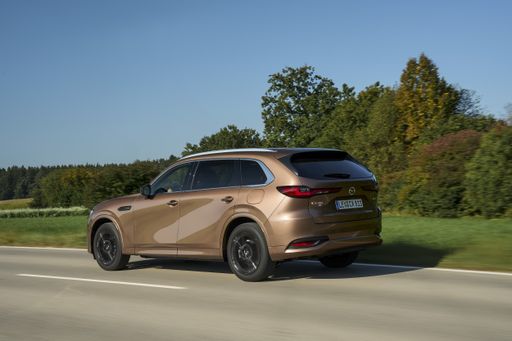 @ Mazda Motor Corporation
@ Mazda Motor Corporation
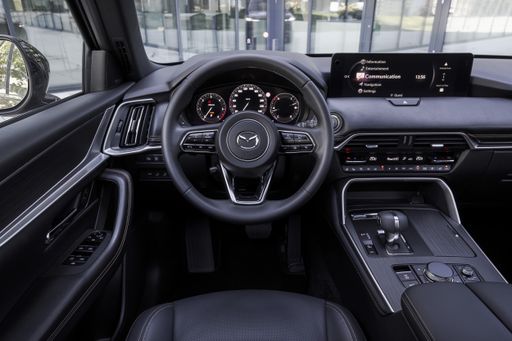 @ Mazda Motor Corporation
@ Mazda Motor Corporation
Volvo XC60
The Volvo XC60 blends Scandinavian calm with confident presence, offering a cabin that feels plush without shouting for attention. It’s a smart pick for buyers after a composed ride, clever practicality and thoughtful safety touches — it even makes running the family shuttle feel almost serene, which is a small miracle.
details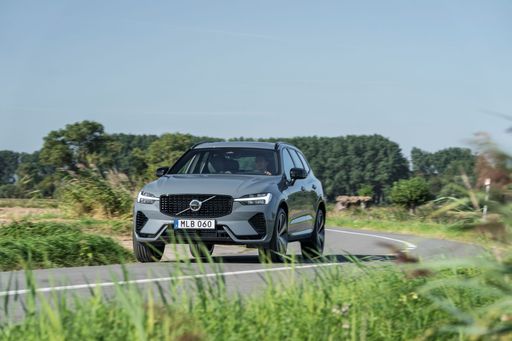 @ Volvo Cars
@ Volvo Cars
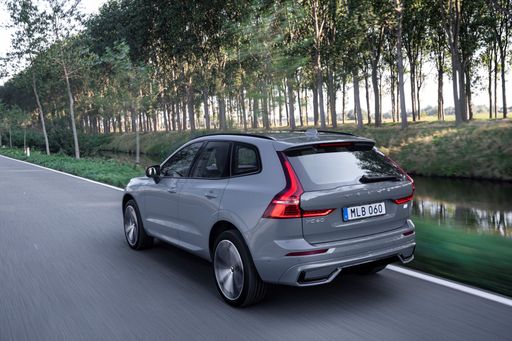 @ Volvo Cars
@ Volvo Cars
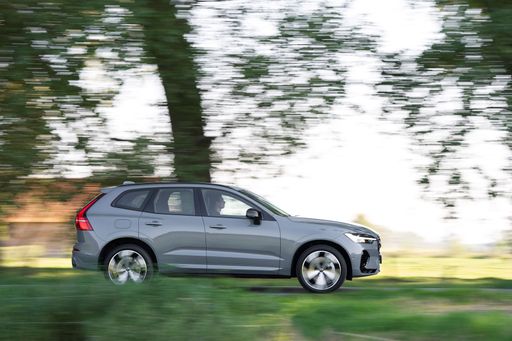 @ Volvo Cars
@ Volvo Cars
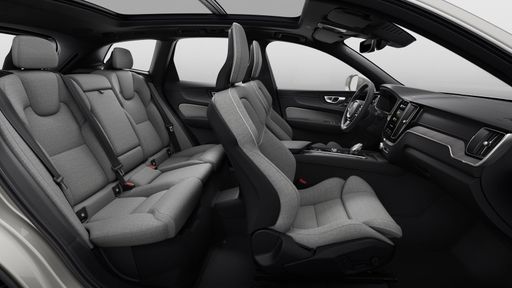 @ Volvo Cars
@ Volvo Cars
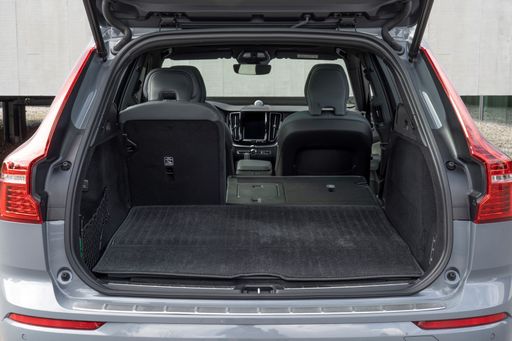 @ Volvo Cars
@ Volvo Cars
 @ Mazda Motor Corporation
@ Mazda Motor Corporation
|
 @ Volvo Cars
@ Volvo Cars
|
|
|
|
Costs and Consumption |
|
|---|---|
|
Price
48200 - 60200 £
|
Price
49200 - 75100 £
|
|
Consumption L/100km
1.6 - 5.8 L
|
Consumption L/100km
2.8 - 7.5 L
|
|
Consumption kWh/100km
-
|
Consumption kWh/100km
-
|
|
Electric Range
61 km
|
Electric Range
74 - 82 km
|
|
Battery Capacity
-
|
Battery Capacity
14.70 kWh
|
|
co2
35 - 151 g/km
|
co2
64 - 169 g/km
|
|
Fuel tank capacity
70 - 74 L
|
Fuel tank capacity
71 L
|
Dimensions and Body |
|
|---|---|
|
Body Type
SUV
|
Body Type
SUV
|
|
Seats
7
|
Seats
5
|
|
Doors
5
|
Doors
5
|
|
Curb weight
2131 - 2240 kg
|
Curb weight
1900 - 2150 kg
|
|
Trunk capacity
258 L
|
Trunk capacity
468 - 483 L
|
|
Length
4995 mm
|
Length
4708 mm
|
|
Width
1890 mm
|
Width
1902 mm
|
|
Height
1714 mm
|
Height
1651 - 1655 mm
|
|
Max trunk capacity
1971 L
|
Max trunk capacity
1528 - 1543 L
|
|
Payload
649 - 650 kg
|
Payload
510 - 550 kg
|
Engine and Performance |
|
|---|---|
|
Engine Type
Plugin Hybrid, Diesel MHEV
|
Engine Type
Petrol MHEV, Plugin Hybrid
|
|
Transmission
Automatic
|
Transmission
Automatic
|
|
Transmission Detail
Automatic Gearbox
|
Transmission Detail
Automatic Gearbox
|
|
Drive Type
All-Wheel Drive
|
Drive Type
All-Wheel Drive
|
|
Power HP
254 - 327 HP
|
Power HP
250 - 455 HP
|
|
Acceleration 0-100km/h
6.8 - 8.4 s
|
Acceleration 0-100km/h
4.9 - 6.9 s
|
|
Max Speed
195 - 219 km/h
|
Max Speed
180 km/h
|
|
Torque
500 - 550 Nm
|
Torque
350 - 709 Nm
|
|
Number of Cylinders
4 - 6
|
Number of Cylinders
4
|
|
Power kW
187 - 241 kW
|
Power kW
184 - 335 kW
|
|
Engine capacity
2488 - 3283 cm3
|
Engine capacity
1969 cm3
|
General |
|
|---|---|
|
Model Year
2024
|
Model Year
2025
|
|
CO2 Efficiency Class
B, E
|
CO2 Efficiency Class
F, B
|
|
Brand
Mazda
|
Brand
Volvo
|
What drive types are available for the Mazda CX-80?
The Mazda CX-80 is offered with All-Wheel Drive.
The prices and data displayed are estimates based on German list prices and may vary by country. This information is not legally binding.
